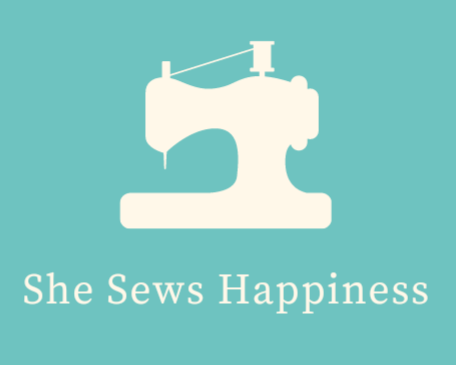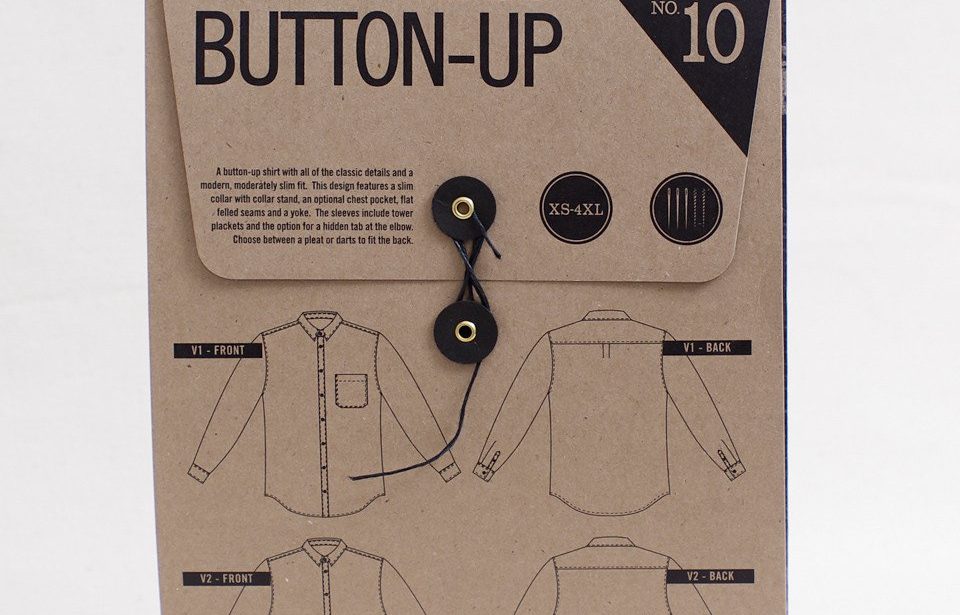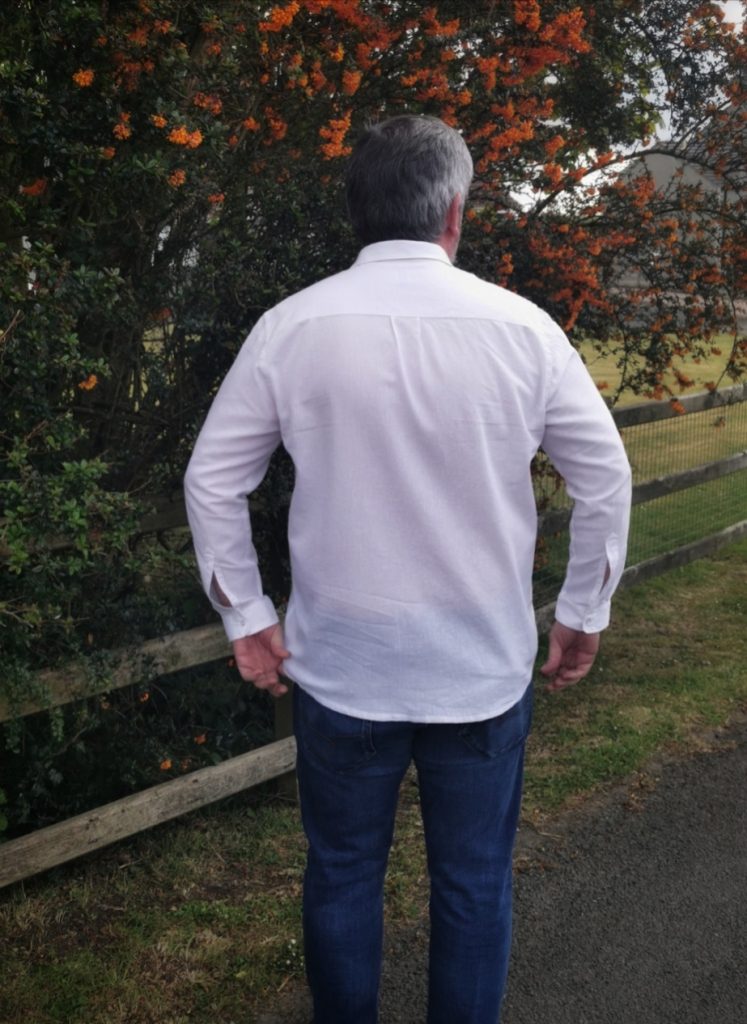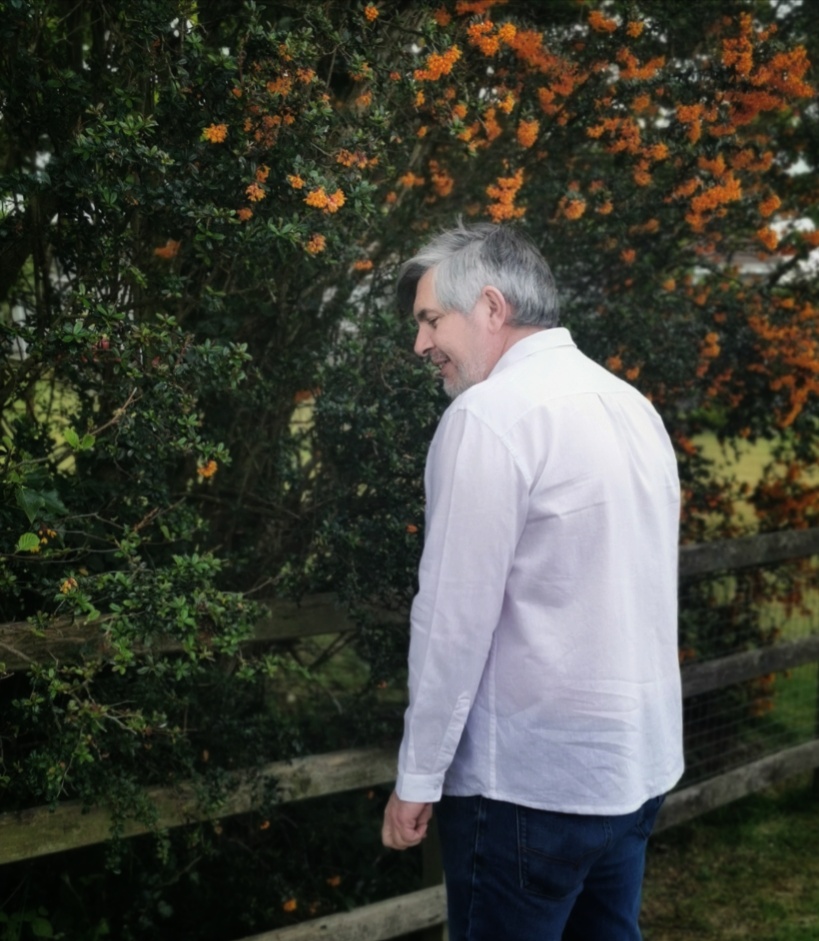Apart from Elbe Textile’s Sage tee, I hadn’t tackled menswear before. I think I’ve found a new niche – and, since Simon needs some new clothes, it’s guilt free sewing. Sometimes I feel slightly guilty when I make myself a new dress (I know I shouldn’t feel guilty but that doesn’t stop me).
The Fairfield Button Up Shirt by Thread Theory is a wonderful starting point for someone like me who’d never made a shirt.

I decided to play it safe and make a practice run. I used an off-white cotton/linen shirting fabric and set to work on what I hoped would be a wearable toile. White seemed like a pretty good starting point as it would show up all the markings easily. I have a couple of other fabrics for making shirts but (especially the black) not that show up markings as easily as the white would.
One of the best things about this pattern is that it offers the option of both slim fit and regular fit with darts and pleats, respectively. What’s more, the pattern is also graded for two body types; slim / average figures and larger figures with pieces that accommodate a rounded stomach. Simon made it very clear when I asked him that he wanted the latter – lockdown side effects have come for us all! His main concern is length – he hates clothes that don’t feel long enough, especially shirts that are being worn over jeans.
Construction
The first thing I noticed about this pattern was the number of pieces (18! but 5 of those are interfacing pieces) required to make the shirt.

It was almost enough to put me off… Almost. I’d committed to making it so I couldn’t disappoint. With retrospect, it’s totally manageable – in fact, it took longer to get Simon in front of the camera than it did to make it – and even though this is a wearable toile and not the most perfect thing I’ve ever made, I’m really proud to have finished it. I know that the next time I make it, I’ll be able to perfect it. I’ve never had so much practice edge stitching and topstitching.
I’m so glad I chose this pattern for my first shirt and would recommend it to anyone who is making a shirt for the first time. I’d definitely make other Thread Theory pattern based on my experience with the Fairfield. The instructions are illustrated and clear but if there’s anything that has you a bit puzzled (I had a few of those moments like when it came to flat felled seams and the burrito method for assembling the back yoke) Thread Theory have an amazing sew-along with photographs.
I worked between the two to make this garment and the seam ripper only made an appearance once. The pattern designers have put a lot of working into researching the most beginner friendly methods of shirt construction. They have even considered how formal or casual you want the shirt to be; I went for a more relaxed style so only one of the collar and cuff pieces have been interfaced in this version.
I think shirts could easily become the kind of thing I really love to sew. I should have counted the times I gave myself a metaphorical pat on the back while making this – there were so many little techniques that were new to me – I felt so satisfied that I was learning as I sewed. For me, that’s one of the best things about sewing – there’s always something new to learn and another accomplishment to make. I really started to enjoy making this once I was in the flow of it – all the external edges are enclosed and topstitched down so you get the satisfaction of an incredibly neat finish both inside and out – there is no need to finish seams or thread up the overlocker.

The flat felled seams were a total revelation. The side and arm seams were great fun – I could never have imagined it was possible to flat fell an arm seam by ‘stitching in a tunnel’ – I really doubted it would work but it does! The satisfaction I got from this is even greater than that time I used French seams! It made me really respect tailoring and the techniques that are involved in making men’s shirts. It also made me wonder why women’s shirts don’t feature the same kind of detailing…
Another first for me was the burrito method of joining the yoke lining to the yoke – it’s one of those techniques that it’s hard to visual until you’ve done it and then the magic becomes real.

Another magical moment was when the sleeve plackets came together – this unusual grided pattern piece filled me with dread and, to be honest, I had to read the instructions three times before I had that eureka moment. This is probably the one pattern piece that needs the most care and attention – if one of those lines is out you’re going to have a bit of a nightmare getting a good finish on the placket so do take your time marking those pieces if you’re going to give this pattern a go.

I would also be curious to try out a checked or striped shirt as this placket piece would be easy to match up with all the lines.
I have to say, collars might not be new to me, but this was the first time I used a pattern with a collar stand – I love the process of setting in a collar!

I’d say the fit of this pattern is pretty true to size – the only adjustment I will have to consider when it comes to making this again is to do a broad back adjustment as you can see the fabric pulling a little on the back of the arms when stretching forwards.
And Simon is happy – bonus!





1 comments on “Fairfield Shirt by Thread Theory”